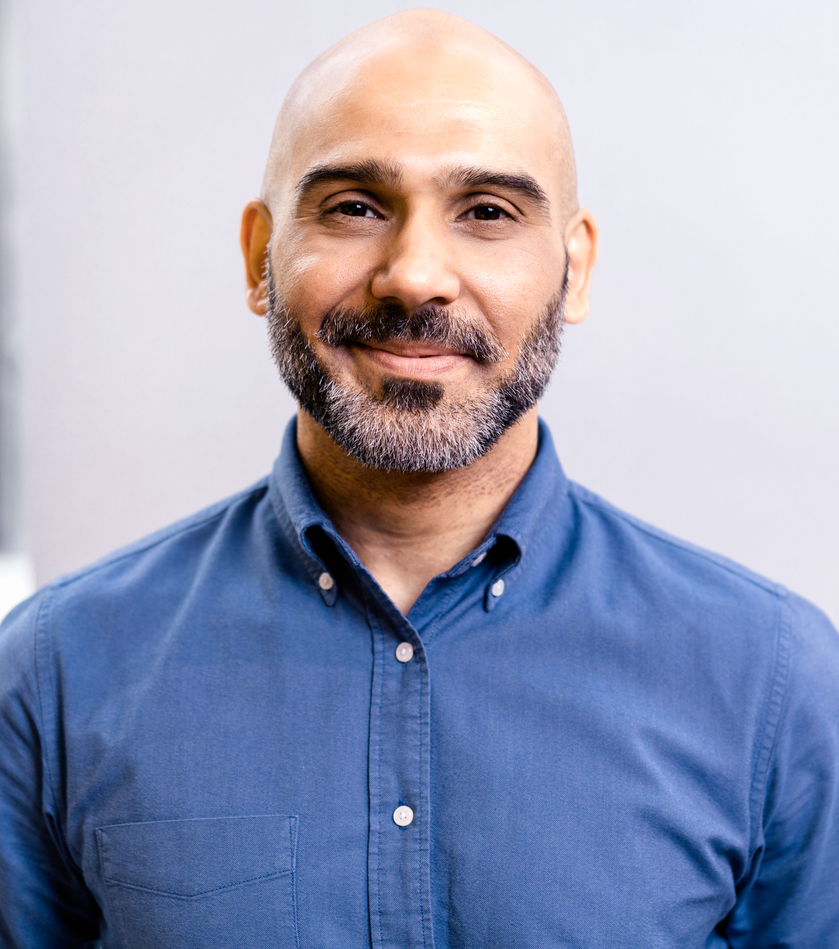Beyond Leadership
Great business leaders make their talent appear natural and easy. It’s not.
Our cases will help to de-mystify the coaching process and provide rare glimpses into the coaching experience.
Great business leaders make their talent appear natural and easy. It’s not.
Our cases will help to de-mystify the coaching process and provide rare glimpses into the coaching experience.

generic image
Sarah was a senior leader at a $10 billion global firm. Recognized for her brilliance, and “take no prisoners” approach, she was not succeeding; she alienated the groups she most needed to influence. Through coaching Sarah learned how to hold back long enough to give space to others, to listen and learn from them.
Always one to take charge and “do it myself,” she is now “out of the weeds,” and her team is stepping up to the challenges. She has cemented relationships with her peers and key stakeholders whose help she needs. As a result, her team has surpassed their financial goals by 10%.
Through a special, intimate process, the coach conducted a deep dive, confidential assessment with Sarah’s colleagues, bosses and peers, and extracted key themes which would be most useful to her. She let her see her blind spots in a way she could accept and motivated her to change. For the first time, Sarah could see clearly why she was not succeeding, and exactly what she needed to do to get what she wanted.
Sarah is on course to be promoted to Vice President. Just as important, “My job used to be so stressful …now I am actually having fun!”

generic image
We recently led a strategy retreat for a global organization. A diverse group of high performing individuals working at cross purposes with competing agendas came together around a global strategy. Each had to commit to set of tactical responsibilities but key player spent parts of the session on a hallway couch.
There are many ways to be "on the couch"... and behave in ways that impede the effectiveness of a team. There comes a point where, no matter who you are and how important your role, you have to be in the room or out of the room. The leader has to be able to say, "Either you're in or you're out."
By doing a team alignment, our client can see who is aligning on goals, roles, strategy, ways of working and who is not. In addition to building a high performing team, the alignment makes clear who the real contributors are.
Even the most critical players can hold back a team if they are not brought into the room.

generic image
Robert was the best engineer in the supply chain business and had steady promotions over 15 years.
Now charged with overseeing 70 people, people complained to him that they never saw him, he was always in his office, and they were not receiving clear instructions.
Fearful of failing, he welcomed coaching as an opportunity to identify his strengths, build better relationships and hold others accountable.
The coach did a "360" assessment, soliciting confidential feedback from his colleagues and prepared a feedback report for him highlighting his strengths and areas for development. She provided him structured exercises to assess his passions and key skills.
Through this deep dive assessment with her, he discovered he loved the analytic work, "coming up with the brilliant solution," and preferred delegating the team management to a very able second in command. He learned in the coaching how to gain his manager's support for his new role and reorganized his team.
Robert was relieved to let go of the team leadership and concentrate on what he did best. His drive and excitement about the work returned. The firm was delighted to preserve his exceptional talent and creativity without which they could not succeed.

generic image
Ronald (identity disguised) had several post graduate degrees and was in a career where he was not progressing. He had extraordinary skills of conflict management and relationship building, but felt stuck in his position in a public relations firm. Having difficulty expressing what he wanted, but knowing it was not what he had, he undertook goal setting with Pat.
Through the Six Areas of Discovery and insightful feedback from his coach, he recalled his extraordinary success as a young adult in engaging and inspiring people. The coach helped him recall how deeply committed he was to making a difference in the world. They sifted through all his accomplishments and distilled his key competencies around which to build his goal. Linking these powerful insights to his marketplace survey, he set a goal... to become a government diplomat in the Middle East.
This clarity brought renewed energy, focus and the tools to:
Tap into a very specific network for opportunities
Build a resume specifically designed to pinpoint his goal and showcase his deep strength in this area
Combine the insights and research into a compelling Elevator Pitch
Communicate clearly precisely what he was seeking and the reasons why he was a terrific fit for this position with confidence and conviction
Search for targeted opportunities
Due to this renewed focus, energy and conviction, Ronald obtained a US Government Foreign Service position in Egypt where he could grow to become the senior diplomat to which he aspired.

generic image
Stan was the proverbial "bull in the china shop." He had brought in millions of dollars of business for his mid-sized financial firm. Yet wherever you looked, he was stepping on someone's toes, acting in a self centered and demanding fashion. How could this rainmaker also be a leader?
Much to his manager's surprise, the coaching helped him dial down the aggression and ramp up the listening. Relationships given up as lost were restored and he gained respect as a leader.
Motivation is key to successful outcomes of coaching. The 1:1 coaching focused on skills of listening, team development and leadership.
Stan had one foot out the door, ready to move on to a competitor. The coach worked closely with Stan's manager to create the structured setting. What would it take to keep Stan? What was the timeline? What were the steps to success?
Given the option of coaching, Stan jumped at it. "No one ever gave me the skills to move from being a trader to leader of an empowered team. By referring me to you, they truly threw me a lifeline."
Stan is now leader of his team. He has learned to tone down the aggression to "healthy assertion," is respectful of others and draws on the best his team has to offer. Most important, he feels respected, part of the team and has renewed commitment to his organization.

generic image
Nancy had two PhD's. She was the brightest and most hard working technical officer in this mid-size manufacturing firm.
Leadership wanted to promote her, but when asked to work on her deficits, she became resentful, even tearful. She withdrew. It was a challenge for her as well as the CEO who was not comfortable with the emotional response.
The coaching involved (1) Work with the boss, helping him to be direct and clear about the expectations and not be thrown off by her upsets; (2) Work with Nancy to manage emotion, be confident and direct with her boss about feedback, and continue skill development for leadership.
The coach conducted a "360" assessment with Nancy's colleagues, bosses and peers. The 360 extracted key themes and revealed blind spots.
The process uncovered weaknesses in relationships with peers which had led to her isolation and anxiety about her performance. It also identified strengths in relationships with direct reports which she then leveraged for success within the organization.
Nancy was promoted to General Manager. As a result of the coaching, she successfully managed her response to her boss's feedback and was able to assert her professional goals. She strengthened her listening skills and built strong relationships with key peers who became her advocates in her new role.

generic image
“What got you’re here won’t get your there.” It’s a truism that illuminates the problems inherent in taking the next step in a successful career. Ralph was a young, ambitious, very successful sales director at a major film studio—a star-- who was no longer being promoted. His career goal was Studio Chief and he possessed many fundamental qualities for this role.
Ralph came to us with his “360” report which provided clues to this “career stall.” Although he was a great “closer” of sales and rainmaker, he was perceived by colleagues as exceedingly impatient, aggressive and a poor team player. To top it off, he was known for having a temper.
He was exceedingly motivated and willing to take a hard look at these weaknesses. He discovered that the aggressive behavior was a learned reaction to being the youngest on the team. He felt he was the object of envy and had a perceived need “to prove himself.”
Taking a closer look, he acknowledged his strengths and creativity, his value to the company. Feeling more confident, was able to shift out of his comfort zone to being a listener. When peers disagreed he was curious rather than confrontational.
The coaching helped Ralph achieve a new sense of calm and confidence and openness to others which has put him in line for the promotion he seeks.

generic image
Larry was a corporate attorney. He had been seeking a new position for 8 months with no success. The legal profession was going through upheavals and corporate attorneys were becoming extinct. He had a vague idea of what he wanted to do, but no clear path for getting there.
Begin with "Discovery" a set of customized inventories, we call the Six Areas of Discovery. Larry was surprised to uncover a strong entrepreneurial bent and a passion for using technology to improve medical service. He identified core skills in the area of business planning.
The missing skill was networking and relationship building. He was not linking to the people who could help him achieve his goal, and he felt uncomfortable and awkward with the process.
Through targeted exercises and mock conversations with the coach, he greatly increased his comfort in articulating his value to others. He made a plan for meeting new people who could help him reach his goal.
Larry greatly improved his ability to build relationships and expanded his network. Using new relationships, he was introduced to a "start –up" medical device organization. Hey hired him as CEO.
Insight: Assess to discover fundamental truths about yourself, your passion and motivation. Find a focus.
Blind Spots: The key success factor is the ability to target your "blind spots" and hidden areas of opportunity. With this tighter focus, you will attract opportunities and have a shorter search.
Coaching: It's the old story, you can't know what you don't know. A coach will shortcut traditional coaching models which can take much longer.